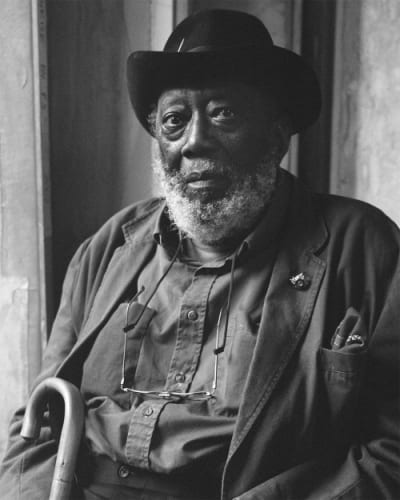“I realised that one of the main ingredients in making paintings was colour and geometry. And I found that this was the place that I felt the most comfortable. I have been going along that track ever since.” – Sir Frank Bowling OBE, RA
Sir Frank Bowling’s highly successful career as an artist has spanned over six decades. Though his early work was figurative and often described as expressionist, the artist’s move to New York in the 1960s shifted his focus onto abstract expressionism. Bowling grew increasingly involved in the making of paintings, realising his interest in colour and geometry. He started stencilling maps over fields of colour, enjoying the combination of geometry, shapes, and embedding autobiographical elements into the abstraction. These celebrated Map Paintings examined a sense of place, displacement, and identity in light of major geo-political changes brought about by the dissolution of the European colonial empires. Bowling recognised the moral and intellectual strength in such an art movement and saw the potential for recounting history using colour and composition.
Bowling has always been driven by a constant need to ‘reinvent’ painting. In the 1970s, his experiments with new materials, techniques, and the idea of chance led him to create his ‘Poured Paintings’, which involved pouring acrylic paint from two meters above ground, creating a warm flow of lava-like paint onto a canvas below. Since then, Bowling’s insatiable determination to make new work, experiment, and find innovative ways of playing with colour/form/process has resulted in artworks that push the boundaries of the medium whilst remaining intellectually grounded in post-war abstraction.
